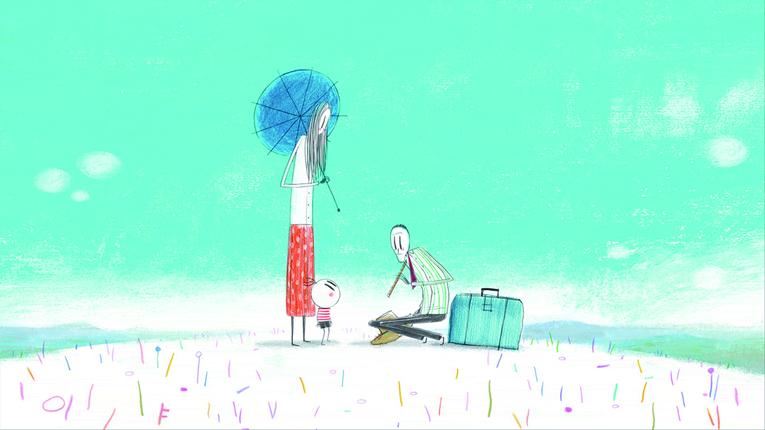20th Animation Division Excellence Award
Boy and the World
Animated feature film
Alê ABREU [Brazil]
Outline
The creator of this animated feature is an active figure in Brazil’s independent animation milieu. A young boy lives happily with his parents until one day when his father suddenly leaves home on a train to look for work. Vowing to find his father and bring him home, the boy sets forth on a journey beyond his small cozy world. What lies ahead are heartbreaking realities: a village of farmers enduring forced labor, or cosmopolitan cities that offer glamorous, carefree but superficial lives, where their dictator secretly tries to lead the region into war. Yet the boy remains undaunted and continues on with his quest, encouraged by the people he meets along the way and also by the fond memories of the days when his father used to play the flute for him. This completely wordless film of simply-shaped characters surrounded by patchworks of color created with crayons, color pencils, collages, oil paint, and whatnot, transcends any language barriers, delivering a fascinating experience to audiences worldwide.
Reason for Award
What do we expect from films? This was the question that crossed my mind watching this film. Whereas many recent animated feature films are overloaded with information, Boy and the World is exceptional. Because of the limited amount of information put forth, audiences become actively engaged with this film. Not depending on words, it is almost like a picture book with ethnic music, filled with imaginative illustrations starting from the boy’s little home and expanding into the vast “real world.” The story unfolds freely, sometimes without identifying “who, what, where and why,” and eventually returns to where it all started, the boy’s home. Even the basic interpretation of the tale, whether it is pessimistic or optimistic, is left for the audience to decide. The minimized depiction of the characters and the background in this film proves how effective leaving things undrawn or unmentioned can be; this is a cool technique that forces us to fill in the enormous blank spaces. One letdown was the oversimplified black-and-white description of good versus evil, even if it was intended to reflect the boy’s perspective. Also, as the insertion of real footage, a technique found in Waltz with Bashir (Ari FOLMAN, 2008), places constraints on our imagination, challenging us instead with more blank spaces to fill might have been an option worth considering. (NISHIKUBO Mizuho)



